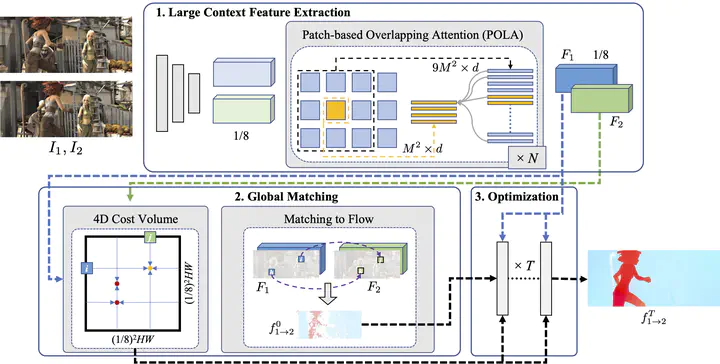
Abstract
Optical flow estimation is a fundamental task in computer vision. Recent direct-regression methods using deep neural networks achieve remarkable performance improvement. However, they do not explicitly capture long-term motion correspondences and thus cannot handle large motions effectively. In this paper, inspired by the traditional matching-optimization methods where matching is introduced to handle large displacements before energy-based optimizations, we introduce a simple but effective global matching step before the direct regression and develop a learning-based matching-optimization framework, namely GMFlowNet. In GMFlowNet, global matching is efficiently calculated by applying argmax on 4D cost volumes. Additionally, to improve the matching quality, we propose patch-based overlapping attention to extract large context features. Extensive experiments demonstrate that GMFlowNet outperforms RAFT, the most popular optimization-only method, by a large margin and achieves state-of-the-art performance on standard benchmarks. Thanks to the matching and overlapping attention, GMFlowNet obtains major improvements on the predictions for textureless regions and large motions.